Freshmen have been excluded from these previews, as we'd like to wait and see what they have to offer on the NCAA level before we come to any long-term conclusions.
Top NBA Draft Prospects in the Big Ten, Part One
Top NBA Draft Prospects in the Big Ten, Part Two
#11 Tim Hardaway Jr., 6'5, SG/SF, Michigan, Sophomore
13.9 points, 3.8 rebounds, 1.7 assists, 1.3 turnovers, 42% FG, 36.7% 3PT, 76.5% FT
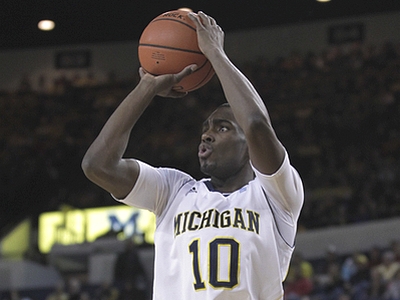
Kyle Nelson
Michigan wing Tim Hardaway Jr. was not as heralded as many of his peers in the Class of 2010, but he nonetheless had an impressive freshman campaign. He was an essential component of Michigan's turnaround and eventual NCAA Tournament run before being selected for both the All Big 10 Honorable Mention and the All-Freshman teams. He then competed in the FIBA U-19 World Championship, an experience that revealed his talents and his weaknesses against some of the world's best young players.
At 6'5 with a long and lanky 185-pound frame, Hardaway has solid size for the shooting guard position along with above average athleticism. He must continue to get stronger, however, while learning how to better utilize his physical advantages on both ends of the floor.
He had a fairly large and diverse role in Michigan's offense, playing 30.7 minutes per game and scoring 19.3 points per 40 minutes pace adjusted.
Nearly one-third of his possessions were spot-up opportunities, and he proved to be one of the most prolific and clutch shooters among all NCAA freshman. He made 36.7% of his 8.2 three-point field goal attempts per 40 minutes pace adjusted and showed solid, albeit inconsistent mechanics, with NBA range. At this stage, he is far more effective shooting with a hand in his face off of the dribble, than with his feet set, where he makes just 29.3% of his attempts. Developing his spot-up shooting is essential, if he wishes to succeed at the next level.
While he must improve his shooting motion significantly, his questionable shot selection is a far bigger concern. 62.8% of his overall attempts are guarded and many of his attempts come fairly early in the shot clock. Considering his size, athleticism, and skill, he should be able to find better opportunities from beyond the arc and around the rim or find his open teammates.
His solid handles do allow him to find shots from the mid-range at this level, where he showed significant potential with his pull-up jump shot. He is also solid slashing to the basket making up for his lack of an elite first step with his crossover, explosiveness, and body control. His lack of strength and tendency to drive right limits him as a finisher at this stage, seen in his sub-50% 2FG, but he should only improve as he continues to develop his body.
Most of John Beilein's offense was running through either Darius Morris or Hardaway by the end of the 2010-2011 season. Now that Morris is in the NBA, Hardaway will have far more opportunities to create, especially out of the pick-and-roll, where he looked comfortable as a freshman. Even while he looks for his offense most of the time, he is a solid passer and turns the ball over at a low rate given his usage. Whether or not he can develop as a creator for his teammates is unknown, but it would certainly improve his standing with NBA scouts.
He is a solid perimeter defender with potential to improve due to his above average lateral quickness and length. He is a good on-ball defender at this stage, though he needs to improve his awareness, particularly when guarding the pick-and-roll. He struggles to fight through screens due to his lack of strength, oftentimes losing track of his man in the process.
Hardaway had the unique opportunity as a freshman to showcase his game against some of the best young talent that the NCAA and FIBA had to offer. Now, with scouts well aware of his strengths and weaknesses, he will have to prove himself as Michigan's top returning scorer and facilitator. If he can string together another impressive year while showing improved decision making and shot selection, then Michigan should be primed for another NCAA run and Hardaway's stock will continue to rise.
#12 Aaron Craft, 6'2, Point Guard, Sophomore, Ohio State
6.9 Points, 4.8 Assists, 2.9 Rebounds, 2 Steals, 2.1 Turnovers, 46.1% FG, 37.7% 3P, 72.7 FT
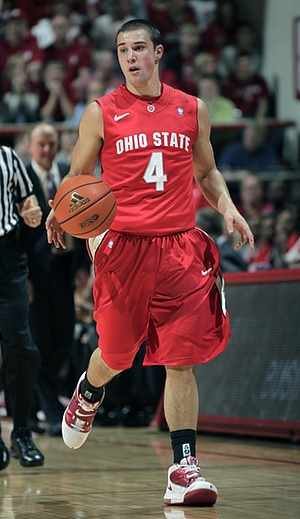
Matthew Williams
Aaron Craft was not considered a blue-chip recruit coming out of high school, but earned national attention for his inspired play as a freshman for the 34-3 Ohio State Buckeyes. Winning the Big Ten Sixth Man of the Year Award and being named to the All-Big Ten Defensive Team, the Findlay, Ohio native was the consummate glue guy for Head Coach Thad Matta.
Despite the praise Craft received for his hustle and defense, it is important to remember that he was playing in a very small niche offensively. Though he could not have meshed better with the veterans on OSU's roster, he did rank among the least prolific per-40 minute pace adjust scorers in our database, attempting the second fewest field goal attempts per-minute, which is a limiting factor on the depth with which we can evaluate his NBA potential at this time.
When delving into what we can definitely say about Craft at this point, analyzing his somewhat unique physical profile is not a bad place to start. Built somewhere in between a Big Ten football player and a point guard, Craft has adequate size and good strength for his position, but it is his lateral speed that really stands out among his peers. Craft moves his feet exceptionally well on the defensive end, and uses his ability to stop and start on a dime to handle full court pressure like a seasoned veteran on offense.
It was Craft's agility that made him one of the peskiest defenders in all of college basketball last year. Ranking among the top players in our database in steals per-40 minutes pace adjusted, Craft doesn't only keep his man out of the lane and apply pressure, he uses his quick hands to create turnovers, stays with plays even when he's beat, steps in front of much bigger players to take charges, won't hesitate to get on the floor to scrap for loose balls, and managed to take some of the NCAA's best scorers out of their comfort zones with his intensity. Though his size and average explosiveness limit his ability to contest shots at times, Craft seems to have the burst that many players in this no-nonsense, defense-oriented mold have lacked in the past.
On top of what Craft offers defensively, he is an extremely efficient passer. The rising sophomore ranked 11th among players in our database in assist-to-turnover ratio, showing a high basketball IQ while making simple plays to set up the experienced group of players around him. A team-first player, Craft seldom forces the issue and is like a coach on the floor. He may not be a dynamic shot-creator at this stage, which limits his upside at the position from a professional standpoint, but he more than got the job done as a true freshman at the collegiate level.
As noted above, one area where Craft did not exceed expectations was as a scorer. Part of the reason why he scored under 7 points per-game was because of the talent around him and that he, in his role of set-up man, was not seeking his own shot, but it was also a result of his recognition of his limitations as a slasher. At the rim, Craft took what defenders gave him and finished at a decent rate, but had his shot blocked on occasion and showed a lack of explosive leaping ability that hurts his ability to compete above the rim.
Out on the perimeter, Craft knocked down a solid 41% of his jump shots in limited attempts. Moving forward, Craft could definitely stand to improve his shooting consistency.
At this juncture, there is no reason to jump to any conclusions about what Craft's NBA outlook may be. He's a probable three or four-year player who has a terrific head on his shoulders, but does not yet have a clearly defined NBA skill, despite his merits defensively. He's an elite role-player in the college game, but as the cast of characters changes around him, Craft's skill level will be tested, at which point his potential NBA prospects will become clearer.
#13 Keith Appling, 6-2, Sophomore, PG/SG, Michigan State
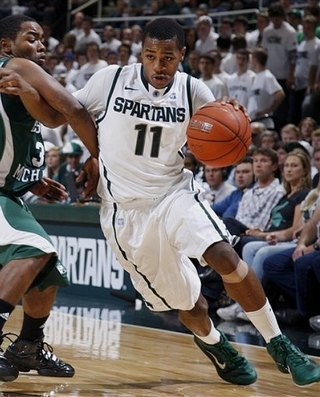
Joseph Treutlein
Keith Appling had a solid debut season for Michigan State, showing a nice package of athleticism and shooting ability. With backcourt teammates Kalin Lucas and Durrell Summers both graduated and no longer on campus, Appling should have immense opportunities to expand his role as a sophomore, as someone will have to account for their missing 62.7 minutes and 23.9 field goal attempts per game.
Standing 6'2 with a nice wingspan and very good quickness, Appling has good size for a point guard but is slightly below average for a combo guard. Billed as primarily a slashing combo guard in high school, Appling made some significant adjustments to his role in East Lansing, where he settled in as a pure shooting guard specializing in three-point shooting. 95 of his 165 field goal attempts on the season came from behind the arc, and plenty more came from shooting mid-range jumpers. He rarely took the ball to the basket in half court settings.
As a shooter, Appling has an exceptionally high and very quick release, showing very good mechanics when he has time to set his feet and get on balance, and acceptable mechanics when shooting on the move. He has no problem putting the ball in the air with a hand in his face and does an excellent job gravitating to open areas behind the arc where he sets up to catch and shoot. Appling hit 41.1% of his threes (and 89.5% of his free throws), establishing himself as a very effective spot-up shooter early in his career, which gives him a nice foundation to build upon.
Looking at the rest of his individual offense, Appling was very limited as a freshman, which can likely be partially attributed to his role and partially to the rawness of this area of his game. Appling rarely puts the ball on the floor going to the basket, and when he does it's usually on a catch-and-drive as opposed to a pure isolation situation. Appling actually shows a nice first step and surprisingly goes left more than right with the ball despite being right-handed, being effective in carefully picking his spots.
His ball-handling is controlled but limited, not showing much in terms of advanced handling, and finding himself in trouble when he finds himself in tight spaces. At the basket, Appling doesn't show a propensity for high-rising elevation, but does a decent job finishing around the rim thanks to solid body control, creativity, and hints of ambidexterity on lay-ups.
In terms of point guard skills, there is really very little that can be taken from Appling's freshman season. He occasionally finds himself in the facilitator role on offense, dribbling the ball at the top of the key and making entry passes into the offensive system, but nothing in terms of driving and dishing or directly creating for others. He does a decent job on entry passes and basic flow-of-the-offense passing, showing adequate vision on the few opportunities he has to use it.
With Summers and Lucas both off the team (and fellow backcourt teammate Korie Lucious also transferring to Iowa State), there will be a massive number of minutes, possessions, and offensive responsibilities for Appling to seize. If he's capable of much more offensively beyond the limited role he played last season, it will be apparent very early in the season.
On the defensive end, Appling is impressive in both man and team defense, using his ample length and motor to play a very pesky style of defense, getting right up into his man on most possessions. He shows good lateral quickness despite a relatively high center of gravity and somewhat awkward stance, while also doing a good job to contest shots and recover from behind when he is beat. Appling's size will likely be his biggest weakness on this end of the court if he can't develop into more of a point guard, as he's clearly undersized for defending 2's and doesn't even have ideal size for a combo guard.
Looking forward, Appling had a nice introduction to the college scene as a freshman, but will likely be asked to do much more as a sophomore, and it will be interesting to see how he responds. Appling clearly brings a nice set of physical tools and shooting ability to the table as a college player, but he's disadvantaged at his size from an NBA perspective if he can't develop into more of a point guard. Still, being a quick, sharpshooting, defensive-oriented guard is a nice foundation to build upon, and Appling should have every opportunity to mature his game this season.
#14 Adreian Payne, 6-10, Sophomore, Michigan State
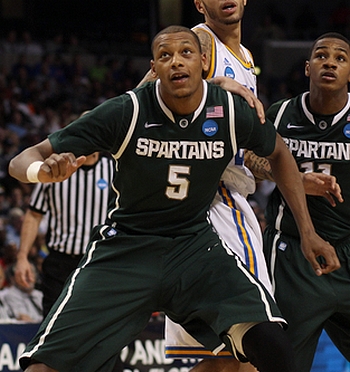
Jonathan Givony
A consensus top-30 recruit in high school, Adreian Payne's freshman season was mostly a learning process, averaging just 2.5 points and 2.4 rebounds in 9 minutes per game.
Listed at 6-10, with a long wingspan, large hands and a frame that should fill out reasonably well in time, Payne is a mobile, agile big man with physical attributes that simply cannot be taught.
Skill-wise, Payne is a fairly limited player at this point, seeing most of his touches around the basket and not being counted on for scoring at all in Michigan State's offense. Capable of playing above the rim and showing very nice extension around the basket, Payne has average footwork and touch and at times looked out of place on the court. His lack of strength hurts him in the paint, and it's clear that his skill-level and feel for the game are still catching up with his physical tools, as he dished out just 5 assists all season and converted 49% of his free throw attempts.
Where Payne did contribute was as an offensive rebounder and shot-blocker, two areas where he ranked among the freshman leaders on a per-minute basis. He's a useful player to have around the basket because of his size, length and agility, and he seems to put a solid effort in as well. Not immune to getting taken advantage of by stronger and more experienced frontcourt players, Payne needs to continue to fill out physically and improve his ability to step out onto the perimeter and move his feet.
Like many young, raw big men, the best thing you can say about Payne at this stage is that he has potential, as he was clearly not very productive as a freshman. Players in his mold can make big, sudden jumps in ability, though, so it makes sense to continue to keep track of his progress to see how he's improving. With Michigan State returning pretty much their entire frontcourt, it will be interesting to see how much more playing time Payne can stake out as a sophomore.
#15 Melsahn Basabe, 6-7, Sophomore, Power Forward, Iowa
11 points, 6.8 rebounds, .3 assists, 2.1 turnovers, 1.3 blocks, 57% FG, 71% FT
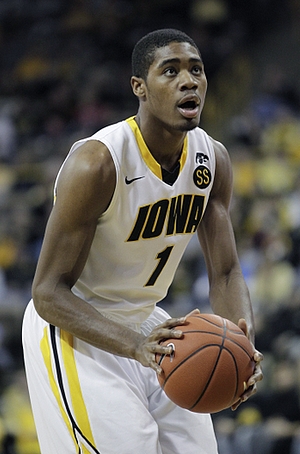
Walker Beeken
Although he may have flown under the national radar last season, Melsahn Basabe made himself known in the Big 10, earning conference all-freshman honors in his first season at Iowa. His season-best game of 22 points, 13 rebounds, and 6 blocks against Big Ten Champ Ohio State last year gave a glimpse of what the Hawkeyes hope to see even more of from Basabe as a sophomore.
From a physical standpoint, Basabe lacks the ideal height of an NBA power forward prospect, standing just 6'7, but he makes up for that with what appears to be a very long wingspan, a nice frame that looks like it should continue to fill out, and a tremendous motor.
Basabe's offensive skill set was still fairly raw as a freshman, but he utilized his length and energy to contribute offensively by catching the ball in the lane off of cuts and getting putbacks off of offensive rebounds. He also showed that his shot-creating repertoire is a work in progress. About 23% of Basabe's offensive possessions came in post-up situations last season, and although he was able to score on occasion using his athleticism and aggressiveness, he still lacked the polish and fundamentals to be a consistent post threat.
Basabe seemed more comfortable, even when catching the ball with his back to the basket, turning to face his man up and attacking the basket with a dribble or two, where he's able to utilize his rangy strides and the quickness advantage he has on most opposing big man. This part of should his game should continue to improve as he becomes more of a threat as a shooter. He attempted less than one jump shot per game last season and didn't show range past about seventeen feet. His shooting form isn't very fluid, but he did connect on 70% of his attempts from the free throw line and looks to have a stroke that he'll be able to improve in time.
Another area where Basabe can make strides on the offensive end is with his feel for the game. He averaged only a half an assist per forty minutes pace adjusted last season and was almost strictly a finsher, often playing with tunnel vision. As he becomes more of a scorer and attracts more attention from defenses, he'll need to feel defenders collapsing and find open teammates. He turned the ball over almost seven times for each assist he dished out last season, which he'll need to improve upon greatly to become more efficient on the offensive end.
Defensively, Basabe shows some promise, as he possesses a great combination of length, athleticism, toughness, and energy. His 2.1 blocks per forty minutes pace adjusted show his effect as a help defender on the interior, and his mobility and quick feet allow him to be able to step out and guard on the perimeter and hedge out onto smaller ballhandlers.
His lack of size at the four spot will likely give NBA teams pause, but there are players his size who have been successful at that level. He'll need to continue to add strength in his upper and lower body to minimize his physical limitations. And while Basabe also had a solid season as a rebounder as a freshman, players of his mold who have gone on and been able to stick at the NBA level have often been able to hang their hat on being relentless on the glass.
Basabe has the chance to have a big season in the Big Ten as a sophomore in 2011-2012. While his lack of height as a power foward and lack of polish in his skill set will likely prevent him from being a top tier NBA prospect, he does have some traits that could translate to the next level if he continues to work on his weaknesses. He's a player that scouts will be keeping an eye on to see how he develops during his career at Iowa.















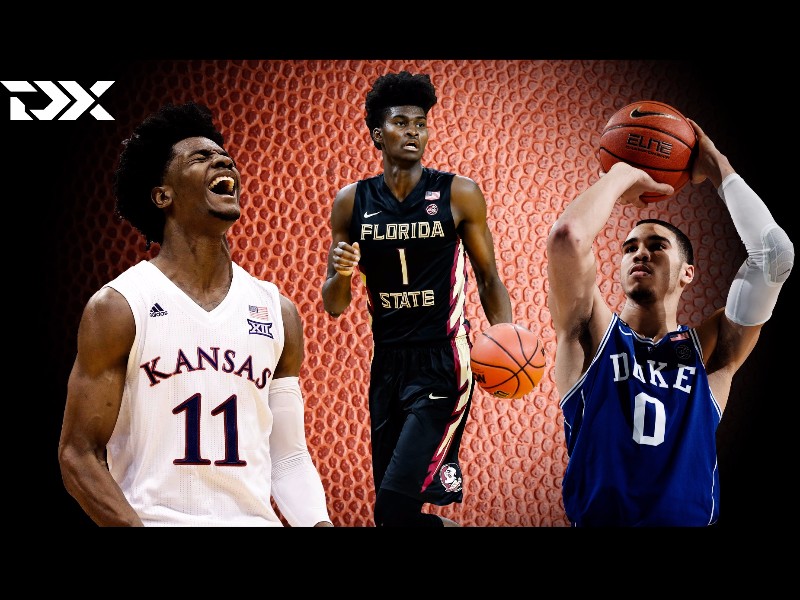
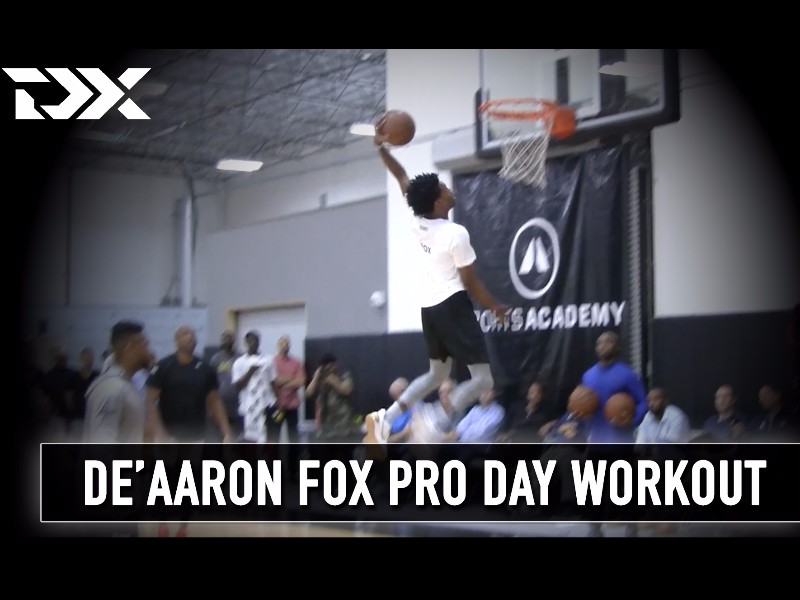




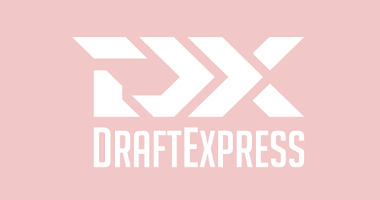












Comments